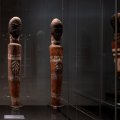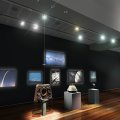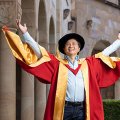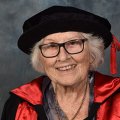Stargazers are reminded of tomorrow's once-in-a-lifetime chance to observe a rare astronomical phenomenon — the planet Venus passing across the face of the Sun.
UQ will provide a live broadcast of the Transit of Venus on its website, fed from specially outfitted telescopes at the St Lucia campus in Brisbane.
Head of the Astrophysics group at the UQ School of Mathematics and Physics, Professor Michael Drinkwater, warns that people cannot look at the sun without damaging their eyes and encourages the safe viewing of the event on UQ’s website.
Professor Drinkwater said transits of Venus occur in pairs, eight years apart and separated by gaps of a little over 100 years.
“The event occurred last on 8 June 2004, and will not reoccur (after tomorrow’s transit) until 11 December 2117,” he said.
“Transits of Venus are even rarer than Halley's Comet, which is seen every 75 to 76 years.”
Professor Clive Moore, head of UQ's School of History, Philosophy, Religion and Classics, said the Transit of Venus held historical significance because the event led to Captain James Cook’s exploration of Australia.
“Captain James Cook travelled to the island of Tahiti in 1769 to observe the Transit of Venus,” Professor Moore said.
“It was on that expedition that he later explored the east coast of Australia.
“Captain Cook was a good navigator with good astronomical observations and it was actually the Royal Society, which persuaded King George the III to fund what really was a scientific exploration to go out into the middle of the Pacific and try to observe the Transit of Venus.
“They had just over 90 crew and set out with 18-months worth of provisions on an eight-month trip on the Endeavour. They arrived at Tahiti two months early.
“It was important that the observation of the Transit of Venus was a success because it wouldn’t happen again for another 120 odd years.
“On the 3rd of June they made their observations and they were really a failure because the instruments they used did not show up good enough findings.
“Captain Cook had then been directed to search for the 'great south land' thought to exist in the South Pacific Ocean.
“This led to his charting the east coast of Australia in 1770, and in 1788 to a British settlement at Botany Bay. Thus, European settlement of Australia is intimately linked to this 18th Century scientific endeavour,” Professor Moore said.
A century later, scientific expeditions were sent across Australia to observe the transits of 1874 and 1882, with many of these successfully recording the event.
Professor Drinkwater said that from a scientific perspective, transits of Venus had helped astrophysicists determine the Astronomical Unit – the distance between the Earth and the Sun.
“All our measurements of distances in the Universe are ultimately based on this measurement of the distance to the Sun.
“Without this we wouldn't have any physical understanding of what lies beyond our own Solar System and we'd certainly have no idea that we live in an expanding Universe,” he said.
Professor Drinkwater said planetary transits, like that of Venus, across distant stars were also the main method used to search for exoplanets – planets outside the Solar System.
Venus will take about six and a half hours to travel across the face of the Sun on June 6. Australia is one of the best places on Earth from which to observe the transit, with the entire event visible from eastern and central parts of the continent.
To view UQ’s live broadcast of The Transit of Venus, tomorrow, visit http://www.uq.edu.au/transit-of-venus. Outlined below are four key times during the day in Brisbane that people may be most interested in watching the event:
8:16am — Venus first “touches” the Sun
8:34am — Venus just inside the Sun on the way “in”
2:26pm — Venus is just inside the Sun on the way “out”
2:44pm — Venus last “touches” the Sun
To view an 8-minute video interview with Professor Drinkwater, click here.
To view a 9-minute video interview with Professor Moore click here.
Caution: Viewing the Transit of Venus across the Sun requires special equipment. Serious eye injuries or permanent blindness can result from looking directly at the Sun with the naked eye or through a telescope.
Available for interview:
Professor Michael Drinkwater, ph +61 (0) 432 887 642, m.drinkwater@uq.edu.au
Professor Clive Moore +61 7 3365 6800, c.moore@uq.edu.au
Media contacts:
UQ School of Maths and Physics Communications Officer Aarti Kapoor
+61 7 3346 9935, a.kapoor@uq.edu.au
Fiona Cameron, UQ Communications, ph +61 7 3346 7086












